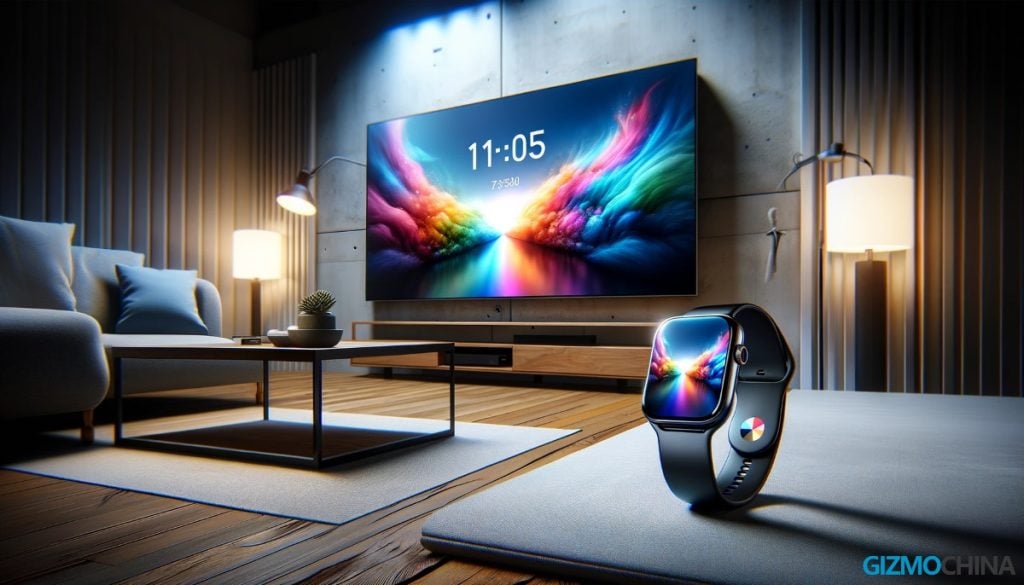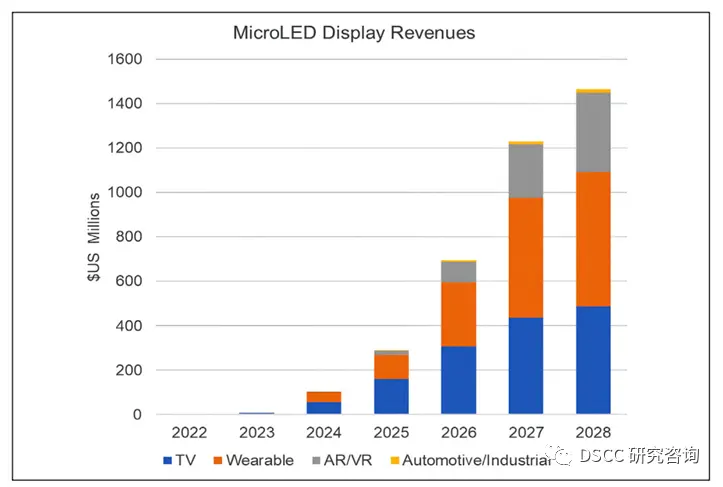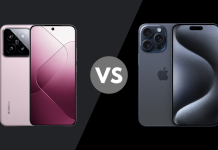The Display Supply Chain Consultants (DSCC), a research firm specializing in display industry analysis, has released a comprehensive forecast report on the MicroLED market, projecting significant growth and market shifts by 2028. This report outlines the emerging trends and challenges in the MicroLED display sector, highlighting its potential impact on various industries.

Emerging Dominance of MicroLED in Wearables
MicroLED technology is set to revolutionize the display market with its superior attributes compared to conventional LED displays. Known for its energy efficiency, microLED displays significantly reduce the risk of burn-in and promise a longer lifespan. These displays are distinguished by their individual pixel light sources, which enable superior contrast, faster response times, and more vibrant colors. This makes microLED technology particularly suitable for devices where high-quality display performance is essential.

One of the key predictions in DSCC’s report is the expansion of the MicroLED market to $1.46 billion by 2028. This growth is expected to be driven primarily by its adoption in wearable devices like smartwatches, AR glasses, and automotive displays. Wearables, in particular, are poised to benefit from the high brightness and efficiency of microLED displays. The smaller display sizes and lower pixel counts in these devices help mitigate the initial challenges of low production yields that have been a concern for larger displays.
Despite its potential, the MicroLED market faces some hurdles. The slow penetration of AR/VR applications and the risk of delays in anticipated products like Apple’s MicroLED smartwatch have led DSCC to adjust its forecasts slightly. The first MicroLED smartwatch, targeting the high-end market, is expected to launch next year, but the manufacturer remains undisclosed.
Apple is a key player in this evolving market. The company is expected to launch its first Apple Watch (Ultra model) with a microLED screen in the fall of 2025, with mass production beginning in early 2026. Additionally, there are plans to upgrade Apple’s Vision Pro headset from micro-OLED to microLED technology. Samsung also plans to use Micro LED displays in its smartwatches, potentially starting with the “Galaxy Watch Ultra,” aiming to replace OLED technology within a year.
There’s another good news for Apple as DSCC reports that the iPhone 15 series has seen a significant increase in panel shipments, with a 16% growth compared to the iPhone 14 series and 21% compared to the iPhone 13 series. The iPhone 15 Pro models, especially in October, have become increasingly popular, securing a 71% share of total panel shipments. The higher starting price of the iPhone 15 Pro Max and consumer preference for higher-storage variants have driven a 5% increase in the Average Selling Price (ASP) for the iPhone 15 series. Samsung Display remains a major supplier, but LG Display and BOE have also entered the supply chain, contributing to the series’ growing demand.
RELATED:
- Samsung, LG’s key display supplier halts LCD material development, shifts focus to MicroLED and OLED
- With the iOS 17.3 Update, Your iPhone Becomes a Thief’s Worst Nightmare
- Alldocube iWork GT 12: AMD 2-in-1 laptop, $100 off and free keyboard
- Get $100 OFF on Xiaomi 14 Pro at Giztop (1TB Variant)
- Lenovo Legion Y700 2023: Save $100 on this 8-inch gaming Android tablet
- Best iPhone 15 Pro cases for 2023: Dbrand, Spigen, RhinoShield & More
(Via)







